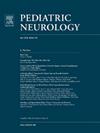氯胺酮联合咪达唑仑与咪达唑仑单用初始治疗小儿广泛性癫痫持续状态(Ket-Mid研究):一项随机对照试验
IF 3.2
3区 医学
Q2 CLINICAL NEUROLOGY
引用次数: 0
摘要
背景:大约三分之一的全身性惊厥性癫痫持续状态(GCSE)患儿无法通过苯二氮卓类药物初始治疗得到控制。探讨氯胺酮联合咪达唑仑一线治疗小儿GCSE的疗效。方法随机对照试验144例6个月~ 16岁的GCSE患儿,随机分为氯胺酮+咪达唑仑组(Ket-Mid组)和安慰剂+咪达唑仑组(Pla-Mid组)。主要终点是临床癫痫发作在5分钟研究时间点停止。次要结果是需要第二次咪达唑仑;在15分钟、35分钟和55分钟时间点停止临床癫痫发作;24小时癫痫发作控制;还有副作用。结果Ket-Mid组患儿5分钟临床癫痫发作停止率为76%,而Pla-Mid组为21%(风险比[RR] 3.7;95%置信区间[CI] 2.3 ~ 5.9;P & lt;0.001)。与Pla-Mid组相比,Ket-Mid组在15分钟癫痫停止的百分比更高(76.4% vs 23.6%;RR 3.2;95% CI, 2.1-5.0), 35分钟(83.3% vs 45.8%;RR 1.8;95% CI, 1.4-2.4)和55分钟(88.9% vs 72.2%;RR 1.2;95% CI, 1.04-1.45),重复使用咪达唑仑的比例较低(23.6% vs 79.2%;RR 0.3;95% CI, 0.19-0.46)和气管插管(4.2% vs 20.8%;RR 0.2;95% ci, 0.06-0.66)。两组在其他结果指标上均无显著差异。结论氯胺酮-咪达唑仑联合治疗小儿GCSE可能比单用咪达唑仑更有效,但需在今后的研究中进一步证实。本文章由计算机程序翻译,如有差异,请以英文原文为准。
Combined Ketamine and Midazolam Versus Midazolam Alone for Initial Treatment of Pediatric Generalized Convulsive Status Epilepticus (Ket-Mid Study): A Randomized Controlled Trial
Background
Approximately one third of children with generalized convulsive status epilepticus (GCSE) are not controlled by initial benzodiazepine therapy. We investigated the efficacy of adding ketamine to midazolam for first-line treatment of pediatric GCSE.
Methods
This randomized controlled trial included 144 children with GCSE aged between six months and 16 years, who were equally randomized to receive ketamine plus midazolam (Ket-Mid group) or placebo plus midazolam (Pla-Mid group). Primary outcome was cessation of clinical seizures at five-minute study timepoint. Secondary outcomes were the need for a second midazolam bolus; cessation of clinical seizures at 15-, 35-, and 55-minute timepoints; 24-hour seizure control; and adverse effects.
Results
Cessation of clinical seizures at five-minute occurred in 76% of children in the Ket-Mid group compared with 21% in the Pla-Mid group (risk ratio [RR] 3.7; 95% confidence interval [CI] 2.3-5.9; P < 0.001). Compared with the Pla-Mid group, the Ket-Mid group had higher percentages of seizure cessation at 15-minute (76.4% vs 23.6%; RR, 3.2; 95% CI, 2.1-5.0), 35-minute (83.3% vs 45.8%; RR, 1.8; 95% CI, 1.4-2.4), and 55-minute (88.9% vs 72.2%; RR, 1.2; 95% CI, 1.04-1.45) study timepoints as well as lower percentages of repeating midazolam (23.6% vs 79.2%; RR, 0.3; 95% CI, 0.19-0.46) and endotracheal intubation (4.2% vs 20.8%; RR, 0.2; 95% CI, 0.06-0.66). Both groups showed no significant differences in other outcome measures.
Conclusions
Ketamine-midazolam combination may be more effective than midazolam alone for the initial treatment of pediatric GCSE, but this should be confirmed in future research.
求助全文
通过发布文献求助,成功后即可免费获取论文全文。
去求助
来源期刊

Pediatric neurology
医学-临床神经学
CiteScore
4.80
自引率
2.60%
发文量
176
审稿时长
78 days
期刊介绍:
Pediatric Neurology publishes timely peer-reviewed clinical and research articles covering all aspects of the developing nervous system.
Pediatric Neurology features up-to-the-minute publication of the latest advances in the diagnosis, management, and treatment of pediatric neurologic disorders. The journal''s editor, E. Steve Roach, in conjunction with the team of Associate Editors, heads an internationally recognized editorial board, ensuring the most authoritative and extensive coverage of the field. Among the topics covered are: epilepsy, mitochondrial diseases, congenital malformations, chromosomopathies, peripheral neuropathies, perinatal and childhood stroke, cerebral palsy, as well as other diseases affecting the developing nervous system.
 求助内容:
求助内容: 应助结果提醒方式:
应助结果提醒方式:


